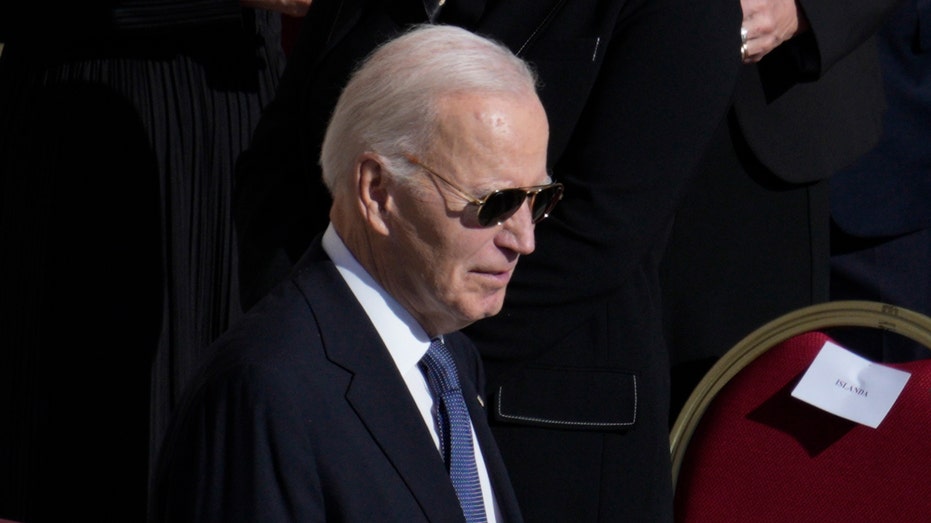The ouster of Mike Waltz as national security adviser — or his “promotion” to being nominated for a UN ambassadorship, as Vice President JD Vance put it — kicked off a wave of speculation over who would replace him. Steve Witkoff? Sebastian Gorka? Stephen Miller? Ultra-online conservatives floated Michael Anton, a senior national security official in the Trump administration who also served during the president’s first term.
You’ll probably recognize Anton as the author of the infamous 2016 “Flight 93 Election” essay, in which he compared Hillary Clinton’s potential presidency to a plane hijacking. But I know his name from somewhere else: the arcane world of classic menswear.
Apart from his public persona in Washington policy circles, Michael Anton cultivated a second intellectual life as a menswear writer. Under the handle “Manton,” he became one of the most prolific contributors to StyleForum, an online community for men so obsessed with the minutiae of tailoring that it recalls a phrase Tom Wolfe once used to describe the fixation on the subject in 1960s America: “the secret vice.” (Back in 2017, Anton told The Intercept that StyleForum was “like a dorm room environment where even people like me, who are old, can feel 19 again….”)
While Anton occasionally weighed in on politics, philosophy and food, the bulk of his 41,000 posts from 2002 to 2016 focused subjects like Neapolitan jackets, English tweeds and Austro-Hungarian shoes. But even when he was writing about fabrics and fits, his political philosophy was on display. And, in what must be an awkward wrinkle for his White House colleagues, his style edicts often clashed with the kinds of outfits his MAGA compatriots wear today — including President Donald Trump’s famous red ties.

In 2006, writing under the pseudonym Nicholas Antongiavanni, Anton published The Suit: A Machiavellian Approach to Men’s Style — a menswear manual modeled on The Prince and written in the voice of a Renaissance court adviser. The book dispenses traditional wardrobe advice while skewering public figures for their aesthetic failures: Tucker Carlson’s bow ties read as pretension, Anton wrote; Johnnie Cochran’s double-breasted suits are vulgar in their button configuration; Donald Rumsfeld appears in the index as a “warfighter and wearer of cheap shoes and ill-fitting shirt collars.” Even Dan Rather, whose tailoring is technically sound, is dismissed as “so slavish in aping his hero Edward R. Murrow — even patronizing the same Savile Row tailoring — that he cannot be said to have any style of his own.”
On StyleForum, where I was also a regular, Anton was one of the more respected contributors. He started some of the forum’s longest-running threads, such asUnfunded Liabilities, where bespoke tailoring enthusiasts talk about fabrics sourced from remote mills and backchannel jobbers. He introduced the flawed idea of a BlazerSuit, which is a bespoke navy suit made with open patch pockets, lapels with plump edges and brown horn buttons so that the jacket could double as a sport coat (a true business suit would have flapped or jetted pockets, simple pick stitched lapels and tonal buttons for a more formal look). Even mundane discussions were treated with the intensity of Talmudic debates, such as threads on poorly chosen pocket squares and the semiotics of white shirts. In a discussion about whether white pocket squares could be worn with white dress shirts, Anton launched into a disquisition on Aristotelian epistemology, Fred Astaire and Plato’s reflections on beauty.
In 2012, Anton started a spate of threads in a last-hurrah effort to save the forum from what he perceived as a slippage in taste. Chief among them was the “Whnay’s Good Taste” thread, where members posted photos of their outfits and Anton presided like a high priest, dispensing approval or censure with Delphic certainty — though more often the latter. “Worst tie I have ever seen,” he told a new member named HopefulGent. “Way too busy, terrible collar, ugly tie, bad square, start over,” he told another. He reserved his harshest comments for people who violated what he felt were taboos, such as pairing navy trousers with sport jackets. “Uncuffed navy flannel odd trousers, JFC, I know the world is ending but can you a-holes stop trying to speed it up?” he posted, using the internet abbreviation for “Jesus fucking Christ.”
But Anton’s most enduring contribution was an approach to style he called Conservative Business Dress, now so firmly rooted in the forum’s culture that it has become a genre unto itself. Originally conceived as satire in response to a well-known forum troll (Kasper, who actually coined the term), Conservative Business Dress — occasionally shortened to CBD — quickly evolved into a serious doctrine. Unlike the sprezzatura of Italian tailoring (a cultivated carelessness) or the theatrical maximalism of English dandies, Anton’s vision prized invisibility. The goal was not flamboyance, but fidelity: a modern extension of Beau Brummell, the 19th-century English arbiter of men’s fashion, and his ideal of the well-dressed man, defined not by ornament but restraint. “If John Bull [everyman] turns around to look at you,” Brummell once said, “you are not well dressed; but either too stiff, too tight or too fashionable.”
CBD was an effort to rein in the visual incoherence often found in the forum’s “What Are You Wearing Right Now” thread, where members shared photos of their outfits for feedback. Many such posters suffered from what Anton called “offensively bold tailored clothing.” While they paired box-checked, double-breasted linen suits with ancient madder ties, red socks and purple suede double monks, Anton advocated for a more restrained outfit that drew from the stylistic language of mid-century elites. Distinction came not from wearing the loudest outfit, but from the ability to logically and coherently combine subtle signals that only fellow connoisseurs would recognize, all while remaining unremarkable in conservative business settings such as New York finance and D.C. law.

The central task of CBD was one of mimicry: to faithfully reproduce the dress codes of mid-century Italian industrialists, Ivy League professors and London’s old aristocratic class without tipping into costume or pastiche. A proper CBD ensemble might include a dark suit in H. Lesser Lumbs Golden Bale — a cloth prized by the cognoscenti for its dry hand and springy body. The choice favors structure over softness, marking the wearer as an insider rather than merely a consumer of luxury goods. The jacket should have soft shoulders, balanced proportions and a three-button front with lapels that roll to the second button, echoing silhouettes from 1940s Harvard or Neapolitan ateliers. The shirt might be white poplin with a moderate spread collar, neither the dagger-like points of a disco relic nor the exaggerated cutaways seen in Ralph Lauren ads. The tie could be a four-in-hand Ivy-style rep stripe or a Macclesfield foulard in subdued hues of navy, burgundy or chocolate brown. Footwear, ideally, would be black stitch-cap oxfords or dark brown split-toe derbies in smooth calfskin and with Goodyear welts — or, for those seeking forum acclaim, they’d be fully bespoke and hand-welted.
This sensibility also accounted for many of Anton’s aesthetic taboos. He abhorred the pairing of navy trousers with sport coats, noting that the look was associated not with the Andover-Harvard set but post-war working-class Americans. Black dress shirts, he argued, should never be worn with tailored jackets, as they had “always been considered both in bad taste and the mark of the lower, and even criminal, classes.” He reserved particular contempt for bright red ties, especially in satin, such as those Trump has made part of his personal brand. (“trump = don’t,” Anton wrote in 2012 as a short style rule). Burgundy, especially in chalky fabrics like ancient madder, still suggested Old Money pedigree. But those festive reds, perhaps more fitting for children’s balloons, annoyed Anton so much that he once blew up over it in a thread.
In “Whnay’s Good Taste,” Anton envisioned a sanctuary: a thread that would rise above the forum’s creeping coarseness. He hoped it might become a curated gallery of well-dressed men, a teaching tool for others to emulate. But over time, he came to see it as being intentionally defaced by forum critics, contrarians and perceived enemies. One poster, known as Tactical, repeatedly uploaded photos of himself wearing bright red ties — an Antonian taboo — even after being told they fell short of the thread’s standards. To Anton, this wasn’t mere misunderstanding; it was deliberate provocation. He eventually snapped, likening the thread to a monument “constantly covered with graffiti.” “They think their graffiti constitutes a beautiful mural,” he wrote. “Whatever, the outcome is the same. Most of the wall is ugly as shit and cleaning it up would be a full-time job. If there were a Raphael or a Da Vinci underneath, the effort would be worth it, but there isn’t, so it isn’t.”
Anton’s menswear writings are genuinely instructive if you share his aesthetic preferences. He possesses a meticulous eye and an encyclopedic command of long-forgotten texts, such as Apparel Arts, a 1930s trade publication that functioned as an illustrated style manual for the American upper class. But his aesthetics tend toward binary judgments: firm distinctions between what is correct and what is corrupt. He’s right, for instance, that black dress shirts have long carried associations with the criminal or déclassé, but wrong to assume this makes them illegitimate by definition. His fidelity to the prelapsarian order of Ivy League campuses and London finance often left him blind to the fact that other classes have their own aesthetics, each equally legible and legitimate, even if they did not descend from Mayflower stock. The men wearing black shirts in Goodfellas looked pretty stylish, I think.
Anton largely withdrew from StyleForum after Trump’s electoral win in 2016. He returned sporadically, but the circle of early posters he had sparred with since 2002 had mostly moved on. Newer members were less reverent; some, in the forum’s increasingly charged political atmosphere, called him a Nazi. Threads he once animated — on good taste, on CBD — floated forward without him, their codes still nominally intact but rarely enforced with the same rigor. He resurfaced occasionally to discuss wine, kitchen knives and his growing contempt for San Francisco and New York City, but the era of his online influence had largely ended.
Menswear writer Christian Chensvold once met Anton in person and later reflected on the encounter: “Anton is a pleasant fellow, but when you meet him you feel a cold scrutiny pass over you like an open window in February.” Today, Anton finds himself back in the Trump administration, surrounded by men in made-to-measure suits marred by collar gaps, contrast buttonholes and MAGA-red ties. Symbols of power to some, perhaps, but to Anton, unmistakable signs of sartorial decline.
.png)















 English (US)
English (US)